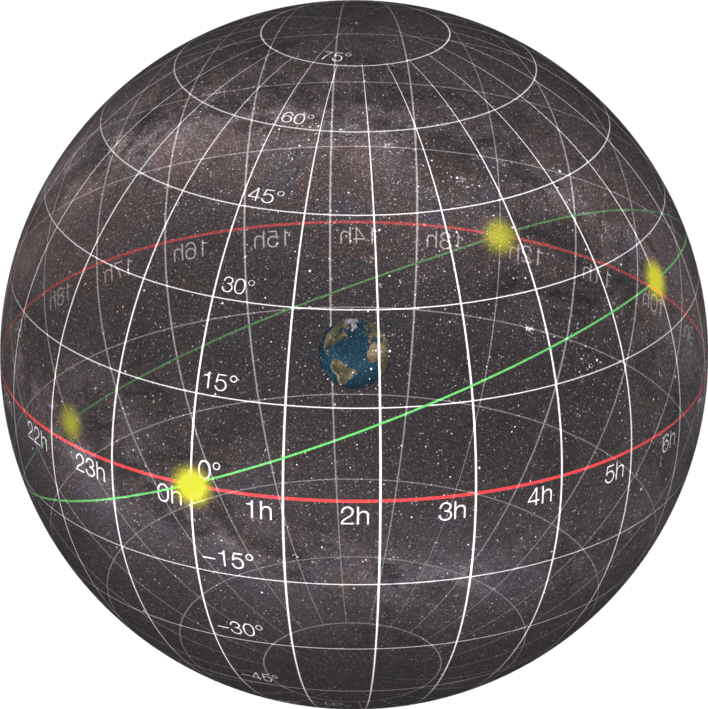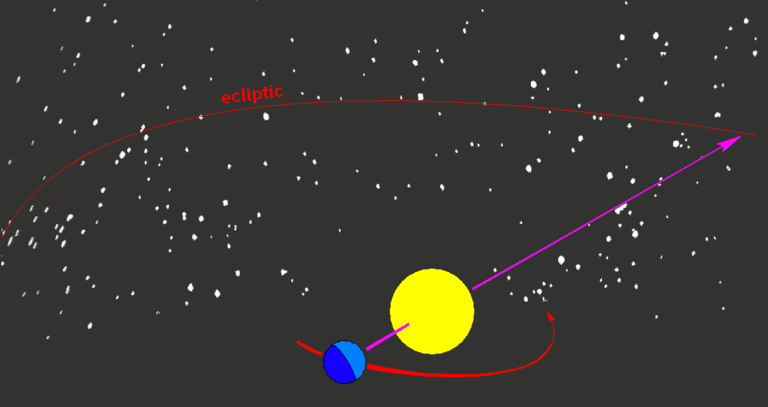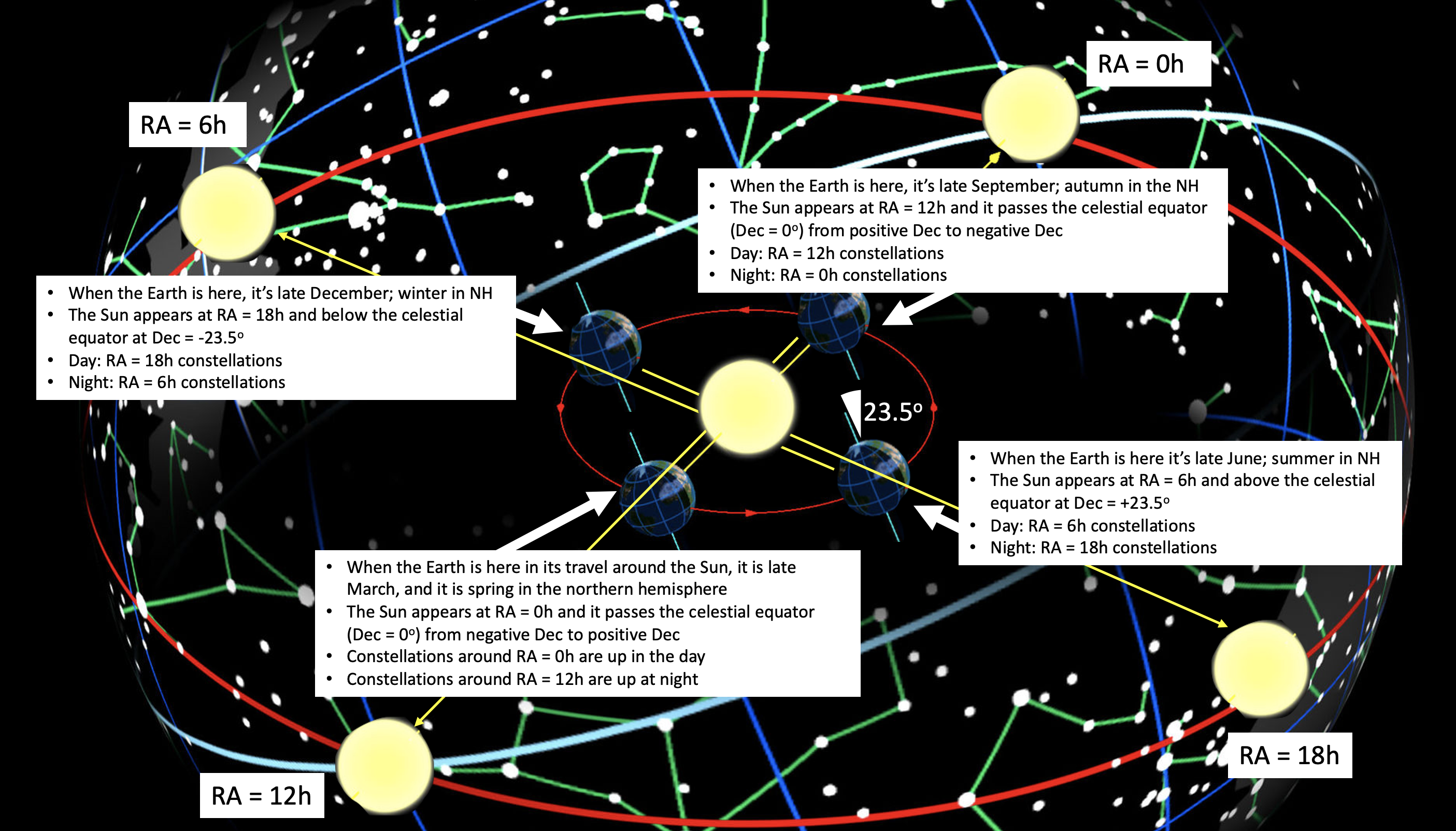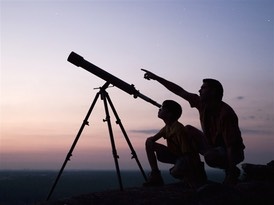
Breadcrumb
- Home
- Labs
- Foundational Labs
- Exploring the Sky II - Star Charts and Stellarium
Exploring the Sky II - Star Charts and Stellarium
Main navigation
Resources: Worksheet, Stellarium Web
Terminology: Equatorial Coordinate System, Right Ascension, Declination, The Horizontal Coordinate System, Azimuth, Altitude, Ecliptic, Meridian
Star charts (constellation charts) and particular software programs are literally maps of the sky. We use them for a number of purposes, such as telling us what time of night certain stars and constellations will be visible, plotting the positions of the Sun, Moon, and planets against the background stars, and locating non-stellar objects such as nebulae and galaxies.
Learning about star charts and relevant software is important because these resources introduce a coordinate system and other methods for locating all of the interesting objects we will discuss this semester. These charts and programs also help convey important terms and concepts such as the celestial equator, the ecliptic, and the Sun's changing position in the sky.
Celestial Coordinates

Just as you can describe your position on Earth with GPS coordinates of latitude and longitude, you can describe the position of any object in the night sky with numbers. We call these numbers Right Ascension and Declination. The 24 lines of Right Ascension (the analogue of longitude) are vertical lines that cross the sky from the north celestial pole to the south celestial pole, perpendicular to the celestial equator. The lines of Declination (the analogue of latitude) are lines that arc across the sky parallel to the celestial equator. Together, Right Ascension and Declination create a grid on the sky on which any celestial object can be located.
Right Ascension, often abbreviated RA, is measured in hours, minutes, and seconds (h, m, s). There are 24 hours of RA, with each hour of RA encompassing 15° of the 360° sky. Declination, often abbreviated Dec, is measured in degrees, minutes, and seconds (°, ', ''). Dec spans from 90° at the north celestial pole down to -90° at the south celestial pole.
How the Sky Changes Throughout the Year

affects where the Sun is seen in the sky
Though for the most part the Earth turns below a stationary, unmoving sky, because the Earth orbits the Sun (our source of night and day), what can at night be seen of the stationary sky changes throughout the year. Additionally, as the Earth orbits the Sun, the Sun is superimposed on the sky at different locations throughout the year (see the animation to the left). During the day, the sky appears bright, but there are constellations back behind the Sun in the daytime, washed out by the scattering of sunlight by Earth's atmosphere.
Examine the diagram below to explore how the sky changes throughout the year, as the Earth orbits around the Sun. It may help to envision yourself standing on the Earth (which you are) at each location of the Earth around the Sun below. At nighttime, the Earth turns you away from the Sun. At what RA are the stars you can see? During the daytime, when you're turned toward the Sun at what RA has the Sun been superimposed into?

of the Sun (the ecliptic), dark lines are lines of RA and Dec, green lines are constellation lines. Image credit: EarthSky
The Sun is at right ascension (RA) = 0h on the Vernal (Spring) Equinox in mid March, so in the spring the sky near RA = 0h will be visible during the day when the Sun is up. As the Earth rotates on its axis and the Earth turns, the full 24 hours of RA of the sky can be seen. So at nighttime in the spring, the sky near RA = 12h will be visible during the night when the Earth has turned away from the Sun (12h being half of the full 24 hours after half a turn of the Earth from day to night). It takes the Earth a year to orbit the Sun, and so it takes the Sun a year to move through the full 24 hours of RA of the sky (completing a full circle through the sky in a year's time). The Sun will be at RA = 6h during the Summer Solstice in mid June, RA = 12h during the Autumnal (Fall) Equinox in mid September, and RA = 18h during the Winter Solstice in mid December before returning back to RA = 0h after one year has passed. The following table may also help with noting how the sky changes throughout the year.
| General Date | General Star RAs Easily Visible at Night |
|---|---|
| March 21 (Vernal Equinox) | 12h, 9h-15h |
| early May | 15h, 12h-18h |
| June 21 (Summer Solstice) | 18h, 15h-21h |
| early August | 21h, 18h-0h |
| September 21 (Autumnal Equinox) | 0h, 21h-3h |
| early November | 3h, 0h-6h |
| December 21 (Winter Solstice) | 6h, 3h-9h |
| early February | 9h, 6h-12h |
Expanded version:
| General Date | RA of the Sun | Dec of the Sun | General Star RAs Easily Visible at Night |
|---|---|---|---|
| March 21 (Vernal Equinox) | 00h 00m 00s | 00° 00' 00" | 12h, 9h-15h |
| early May | 03h 00m 00s | 11.75° 0' 00" | 15h, 12h-18h |
| June 21 (Summer Solstice) | 06h 00m 00s | 23.5° 00' 00" | 18h, 15h-21h |
| early August | 09h 00m 00s | 11.75° 00' 00" | 21h, 18h-0h |
| September 21 (Autumnal Equinox) | 12h 00m 00s | 00° 00' 00" | 0h, 21h-3h |
| early November | 15h 00m 00s | -11.75° 00' 00" | 3h, 0h-6h |
| December 21 (Winter Solstice) | 18h 00m 00s | -23.5° 00' 00" | 6h, 3h-9h |
| early February | 21h 00m 00s | -11.75° 00' 00" | 9h, 6h-12h |

Learning Goals: The goal of this lab is for students to familiarize themselves with charts and software used for studying the sky, which may be used throughout the semester.